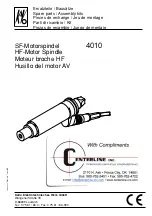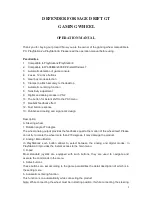
Chapter 3 Signal Conditioning Application Examples
National Instruments Corporation
3-9
BNC-2090 User Manual
attenuators external to the BNC-2090. You can use attenuators to
reduce a signal that is outside the normal input range of the DAQ board
(
±
10 V maximum).
Warning:
The BNC-2090 is not designed for any input voltages greater than 42 V,
even if a user-installed voltage divider reduces the voltage to within the
input range of the DAQ board. Input voltages greater than 42 V can
damage the BNC-2090, any and all boards connected to it, and the host
computer. Overvoltage can also cause an electric shock hazard for the
operator. National Instruments is
NOT
liable for damage or injury
resulting from such misuse.
Figure 3-7 shows a three-resistor circuit for attenuating voltages at the
differential inputs of the BNC-2090. The figure also shows the
placement of the resistors on the open-component positions for
differential channel 1. The gain (G) of this attenuator is given by the
following formula:
(Formula 3-2)
Therefore, the input to the MIO board (V
MIO
) is as follows:
(Formula 3-3)
where V
SC
is the voltage applied to the BNC connectors of the
BNC-2090. The accuracy of this gain equation depends on the
tolerances of the resistors used.
Figure 3-7.
Attenuator for Use with Differential Inputs
Using the values in Figure 3-7,
G
R
E
R
C
R
D
R
E
+
+
(
)
-----------------------------------------
=
V
MIO
V
SC
G
( )
=
To Input
Mux
J2
R22 = 10 k
Ω
(D)
R21 = 10 k
Ω
(C)
+
-
C2 = 10 k
Ω
(E)
















































